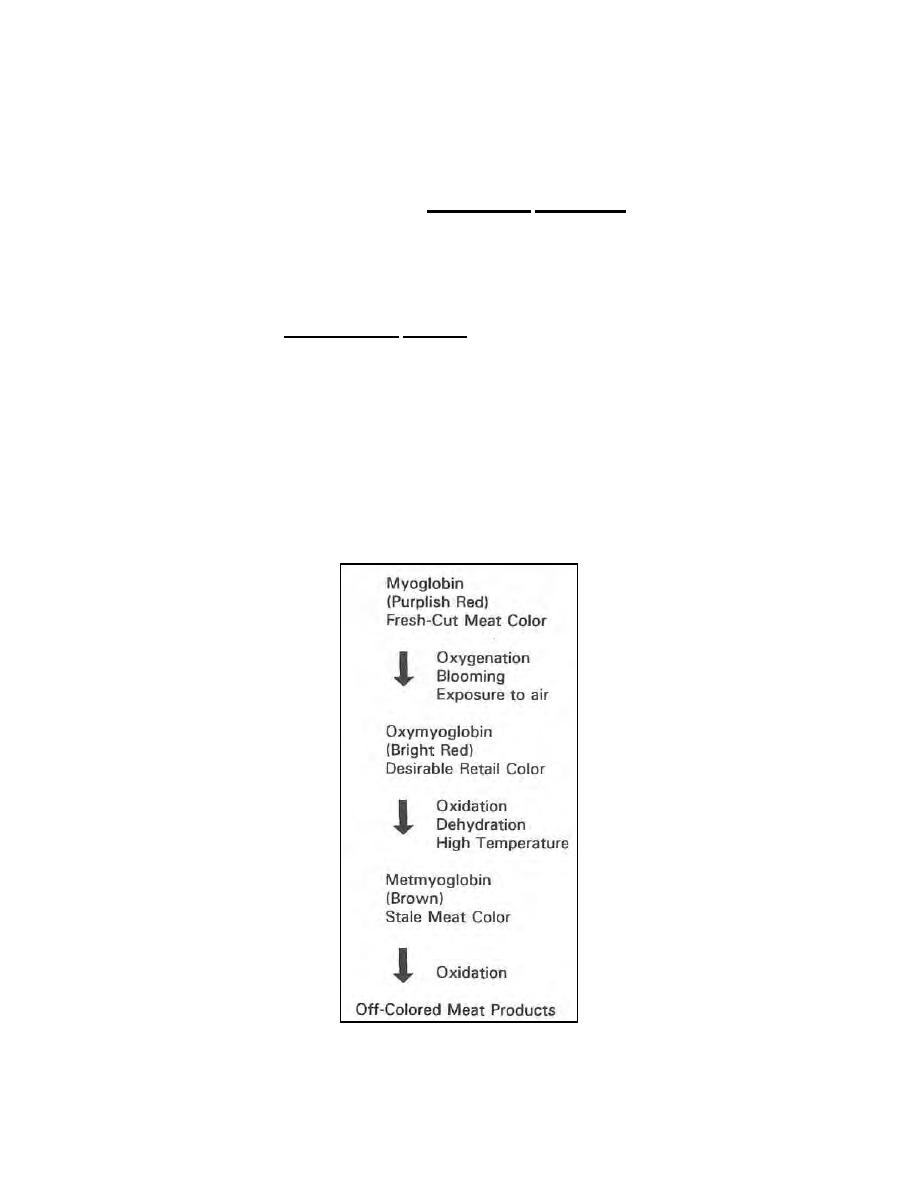
(b) Green cores of bacterial origin occur rather commonly, especially
among the larger sausages. The discolored core is not apparent at the time of cutting
but becomes visible within one to several hours after exposure to the air. In several
cases, the discoloration may show through to the surface. A common microorganism
associated with sausage green cores is Lactobacillus viridescens. This bacterium has
an extreme thermal tolerance (very heat-resistant).
(c) Another similar internal greening problem occasionally encountered
is the discoloration of canned hams. At the time of opening, the tissues appear normal.
However, when they are sliced and packaged for display purposes, the color may fade
or turn green rapidly. Streptococcus faecium is often found to be the responsible
microorganism in such instances. This bacterium is relatively heat-resistant and is able
to grow at refrigeration temperatures. This organism survives the thermal processing
during canning of the ham and grows rapidly prior to the time of opening. There is no
swelling of the can and it may have no off-flavors or off-odors, with the exception of an
occasional sour flavor.
f. Normal Fresh Red Meat Colors.
(1) When fresh red meat is initially cut, the myoglobin (muscle pigment)
color is a purplish red. See figure 2-2 for color changes.
Figure 2-2. Fresh red meat color changes.
MD0723
2-8



 Previous Page
Previous Page
